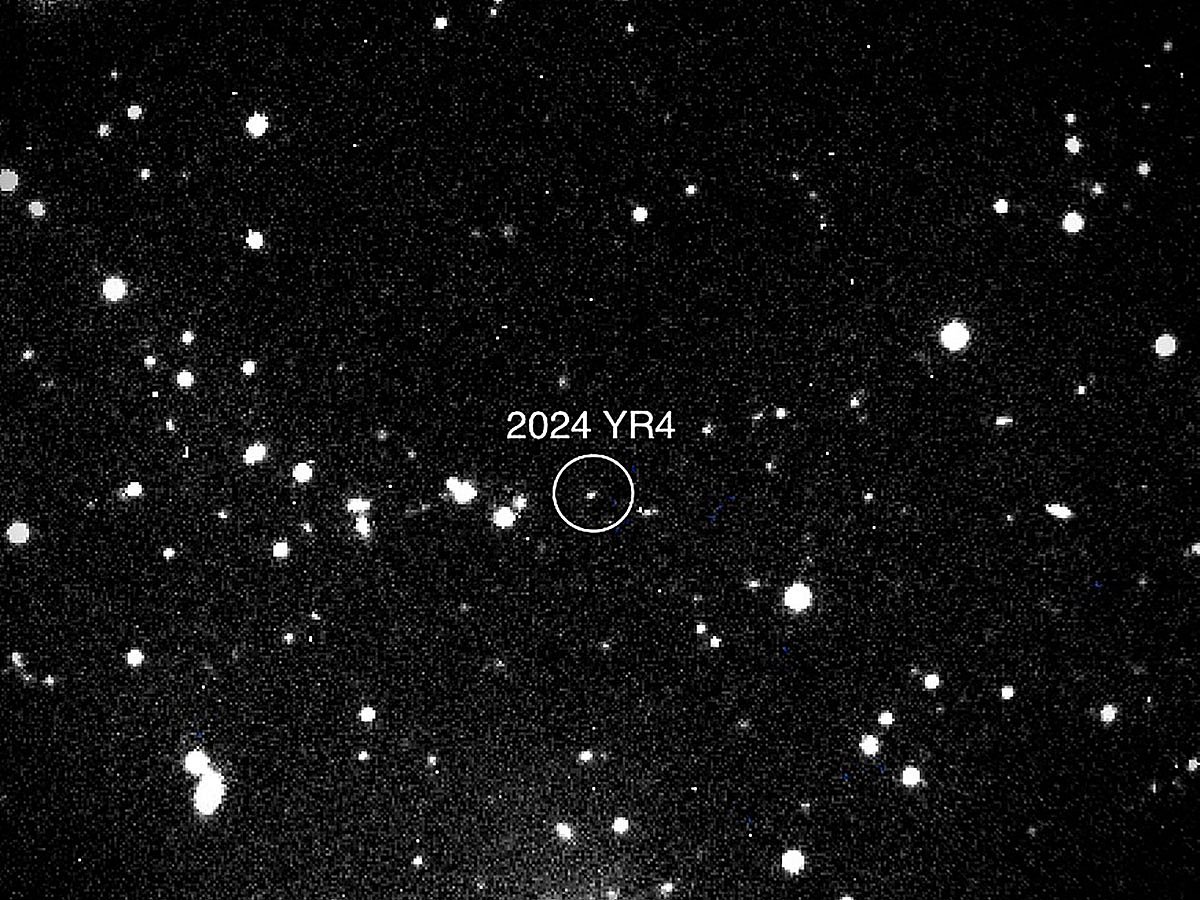NASA has announced that the asteroid known as 2024 YR4 now has a 3.1 percent chance of striking Earth in 2032. This data, released on Tuesday, identifies it as the most threatening asteroid recorded by modern forecasting efforts.

Even though the risks are higher, experts say there is no reason to worry right now. Astronomers all over the world are keeping a close eye on things. Next month, the James Webb Space Telescope will look at the asteroid and give us more information about its path. Bruce Betts, who is the chief scientist for the Planetary Society, said that he is not scared even though the numbers are going up. He said that as astronomers collect more information, the chance of a collision may go up at first before most likely going down to zero.
On December 27, 2018, the El Sauce Observatory in Chile found 2024 YR4 for the first time. According to how bright it is, astronomers think it is between 130 and 300 feet (40 and 90 meters) wide. An analysis of its makeup says it is not metal-rich. The International Asteroid Warning Network (IAWN) sent out a warning on January 29 after the chance of an impact went over 1%. The expected risk has changed since then, but it is still going up.
NASA’s calculations show that the possible impact date is December 22, 2032. This means that the odds of seeing it happen are about 1 in 32, which is the same as correctly guessing the outcome of five straight coin flips. This is a big rise in the risk. The last time an asteroid bigger than 30 meters was this dangerous was with Apophis in 2004, which had a 2.7% chance of hitting Earth in 2029. Richard Moissl, who runs the planetary defense office for the European Space Agency, said that the chance is now 2.8%, which is a little lower.
Moissl said that what was happening was “very, very rare,” but he made it clear that it is not a disaster. He made it clear that 2024 YR4, which is called a “city killer,” is mostly dangerous to cities and not a worldwide disaster like the one that killed off the dinosaurs 66 million years ago.
It is most likely that 2024 YR4 would hit Earth’s atmosphere as an airburst. This type of explosion could have eight megatons of TNT power, which is more than 500 times the power of the Hiroshima bomb. If, on the other hand, the asteroid is closer to the largest size estimate, an impact hole might form. Areas in the eastern Pacific, northern South America, the Atlantic, Africa, the Arabian Peninsula, and South Asia could be affected.
Luckily, there is a lot of time to get ready. NASA’s DART mission in 2022 showed that spacecraft can change the path of an asteroid. Scientists are now looking into a number of ways to steer possibly dangerous asteroids away, including using lasers or nuclear explosions as last resorts.

Leave a Reply